A&P unit 3 - neurons and neurotransmitters
1/49
Earn XP
Description and Tags
Name | Mastery | Learn | Test | Matching | Spaced |
|---|
No study sessions yet.
50 Terms
components of CNS vs PNS
CNS = brain, spinal cord
PNS = nerves, ganglia (bundles of nerves)
Afferent nervous system
sensory neurons, go TO CNS
(afferent = arrive)
-somatic and visceral
somatic sensory system
-afferent
-detect stimuli we consciously perceive
→ 5 senses, propioreceptors
visceral sensory system
-afferent
-detect unconscious stimuli
→ signals from internal organs
Efferent nervous system
initiate motor output FROM CNS
(efferent = effect)
→ somatic and autonomic motor systems
→ sympathetic and parasympathetic
somatic motor system
-efferent
-send voluntary signal to skeletal muscles
autonomic/visceral motor system
-efferent
-send involuntary signal to cardiac and smooth muscle
-includes sympathetic and parasympathetic
sympathetic vs parasympathetic
sympathetic = fight or flight
parasympathetic = rest and digest
afferent, efferent motor system diagram (photo)
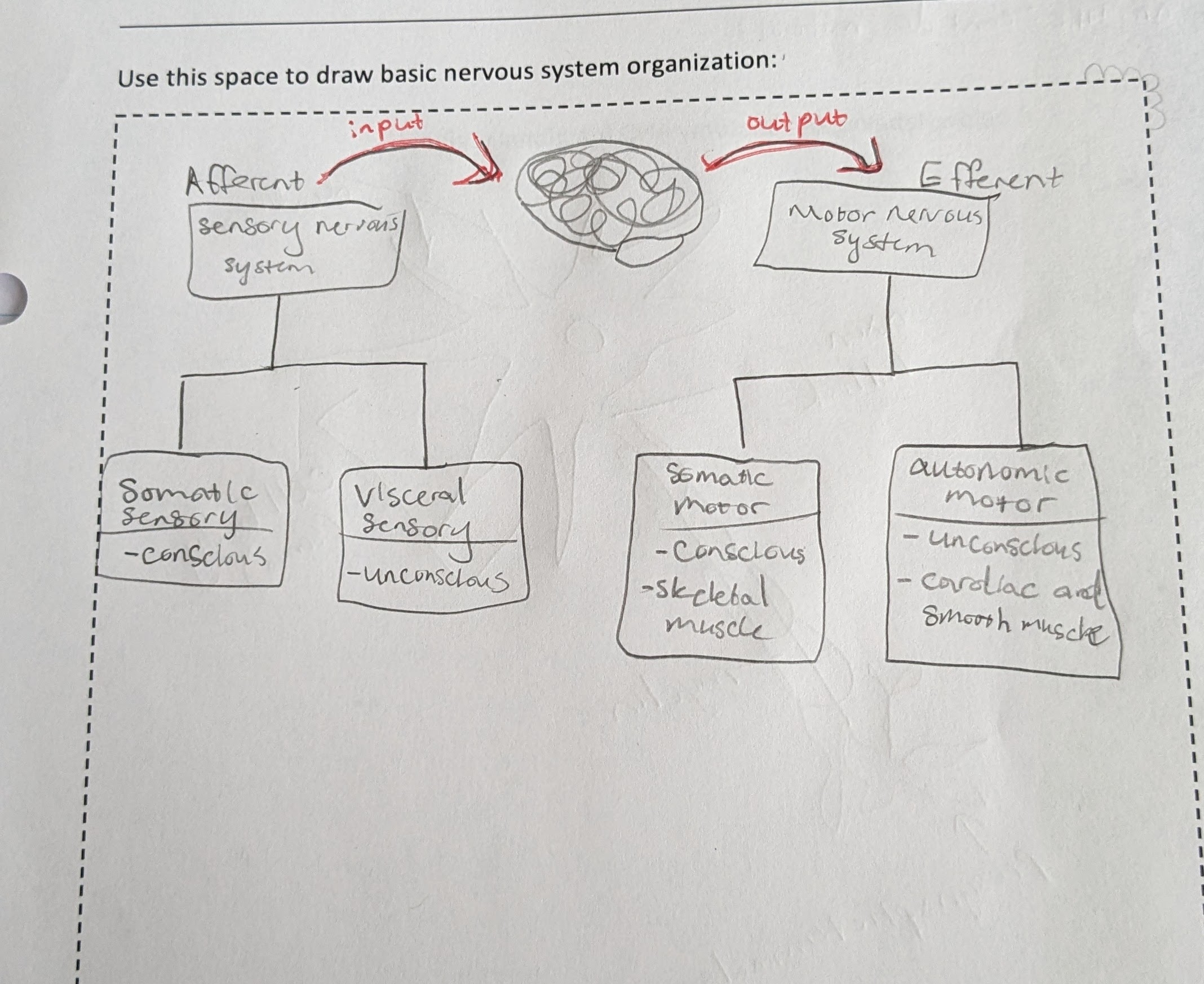
nerve diagram
need to know
-epineurium
-perineurium
-endoneurium
-fasicle
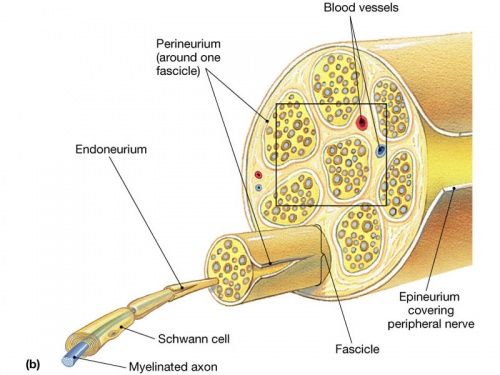
neuron diagram
dendrites = receive input
-cell body/soma = integrate incoming signals
-axon hillock = trigger zone for new signal
-pre-synaptic terminals/axon terminals = send output to other cells
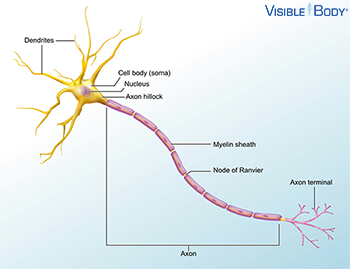
What are the 5 characteristics of neurons?
1) excitability - respond to a stimulus
2) conduct signal across axon
3) secrete neurotransmitter
4) longevity - lasts across your lifetime
5) amototic - can’t do mitosis
anterograde transport
move FROM cell body
-move newly synthesized material toward synaptic knob
retrograde transport
move TO cell body
-moves used materials from axon for breakdown/recycling
Fast axonal transport (image)
Kinesin = anterograde
Dynein = retrograde
*both require ATP
-move 400mm per day
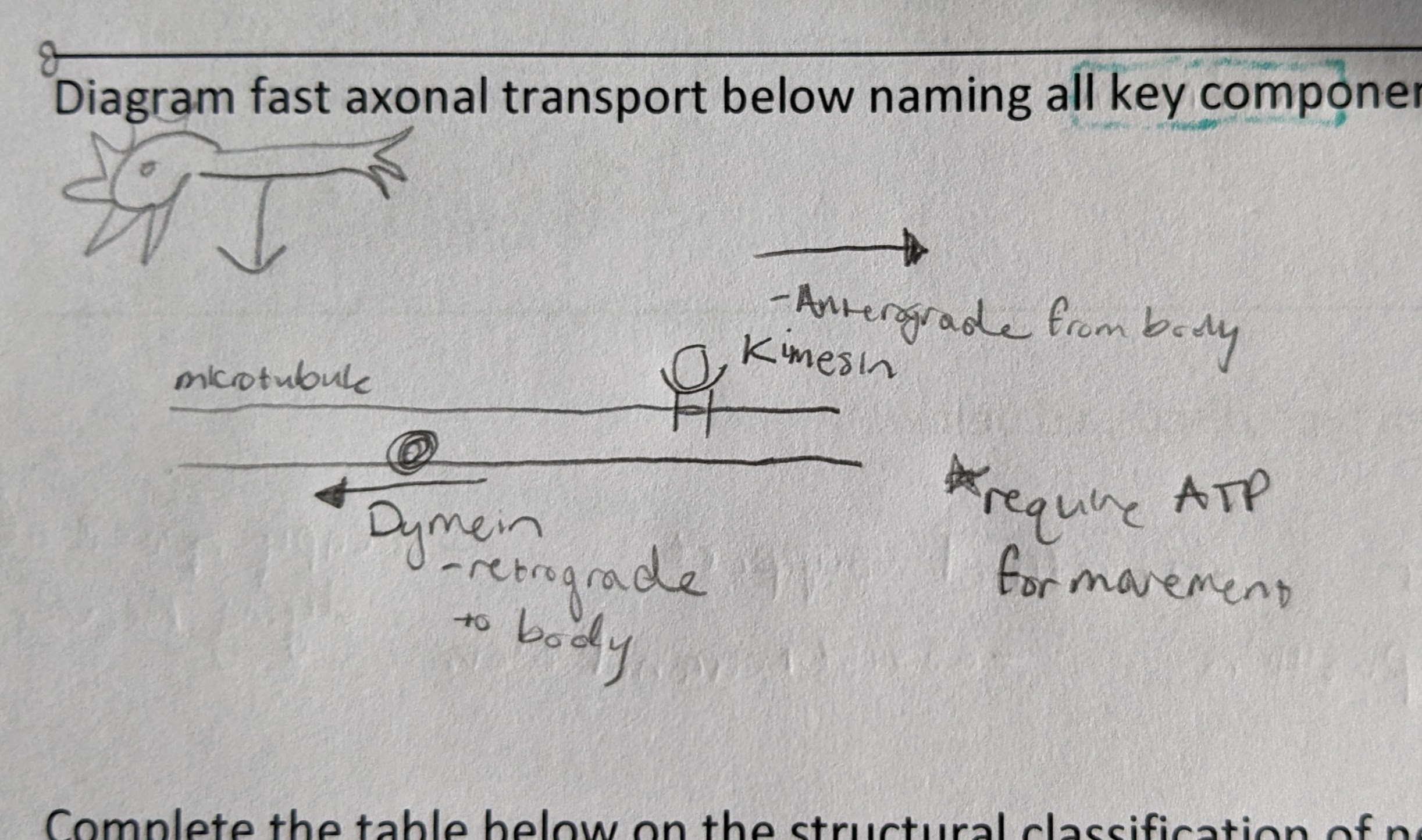
slow axonal transport
-move 0.1-3mm per day
-flow of axoplasm (axon cytoplasm)
-only in anterograde direction (from body)
-moves enzymes, cytoskeletal components, new axoplasm
multipolar neuron
-many dendrites
-1 axon
→ all motor neurons

bipolar neuron
-1 dendrite
-1 axon
-soma in middle
→ sensory neurons of 5 senses
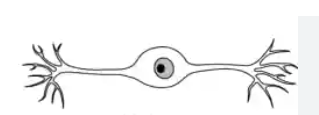
unipolar neuron
-single short process from cell body → 1 axon
-one side of axon in peripheral direction (to PNS), one side in central direction (to CNS)
→ sensory neurons
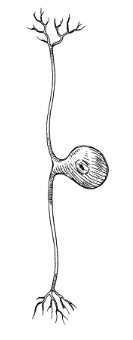
anaxonic neuron
-no axons
-dendrites come directly off cell body
→ interneurons
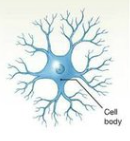
neuron input, output diagram

sensory neurons
-afferent (conduct input to CNS)
-unipolar and bipolar
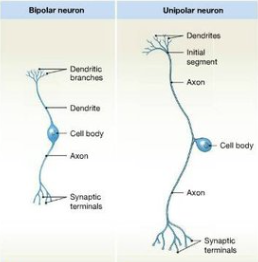
motor neurons
-efferent (conduct input from CNS to effectors)
-multipolar
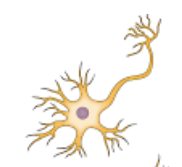
interneurons
-in between afferent and efferent neurons
-receive and process info from other neurons
-multipolar or anaxonic
-make up 99% of neurons
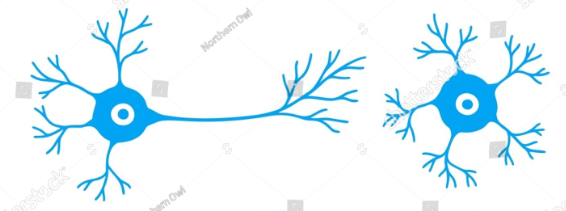
components of glial cells
-non-excitable
-capable of mitosis
-protect & nourish neurons
-physical scaffold for neurons
-90% of cells in CNS
what kind of cells do brain tumors form from?
glial cells → they are capable of mitosis and neurons are not
Astrocytes
-most common glial cell
-form blood brain barrier
-structural support
-assist neuronal development
-occupy space of dying neurons
-regulate tissue fluid composition (ex. can regulate [K+])
![<p>-most common glial cell</p><p>-form blood brain barrier</p><p>-structural support</p><p>-assist neuronal development</p><p>-occupy space of dying neurons</p><p>-regulate tissue fluid composition (ex. can regulate [K+])</p>](https://knowt-user-attachments.s3.amazonaws.com/8bacc2c4-1c36-41c7-8cb7-2a7b64400124.jpeg)
Ependymal cells
-glial cell
-line cavities in brain and spinal cord
-cushion neurons and provide nutrients
-produce CSF of CNS
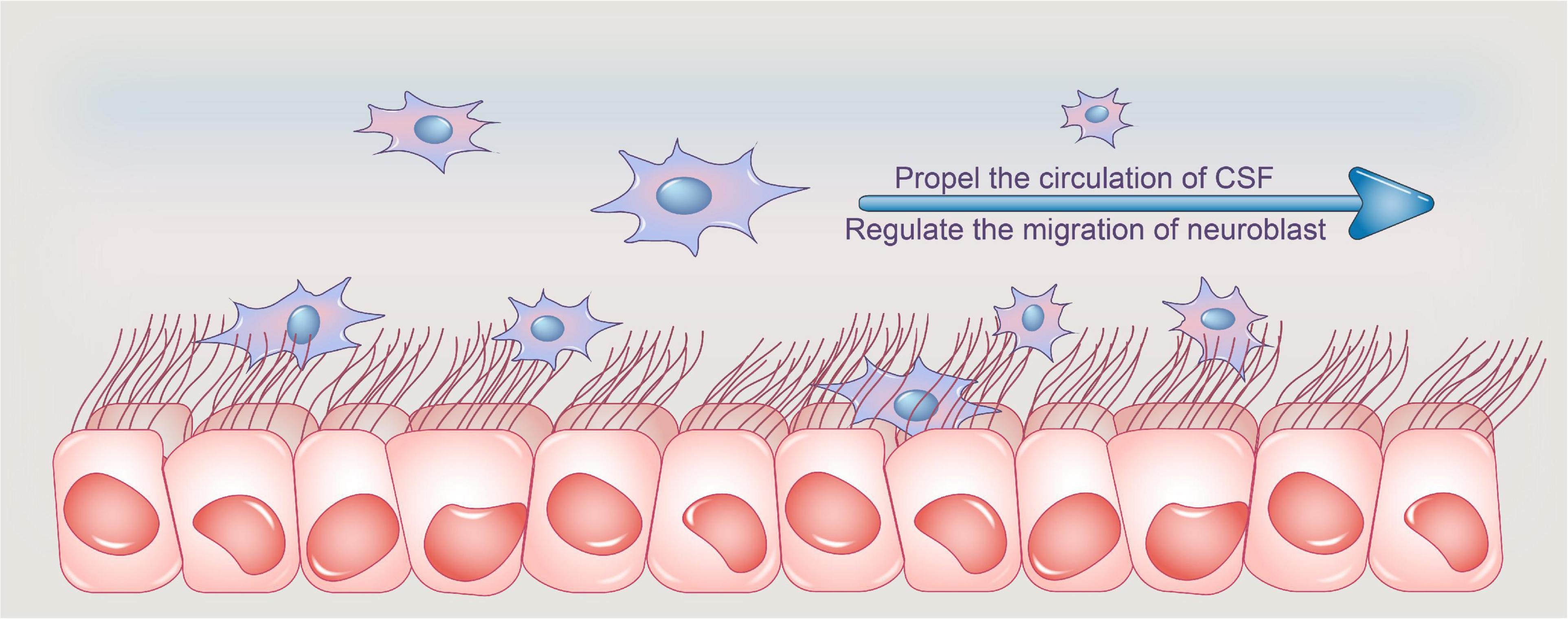
Microglia
-smallest glial cells
-phagocytic, immune system
-wander CNS and replicate during infection
-also remove debris
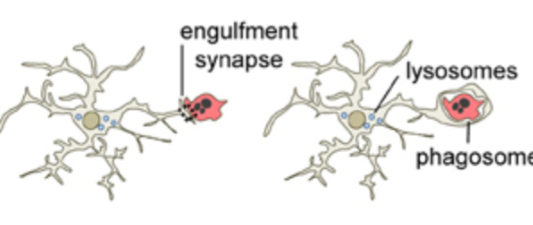
Oligodendrocyte
-very large glial cells
-form myelin sheath of CNS
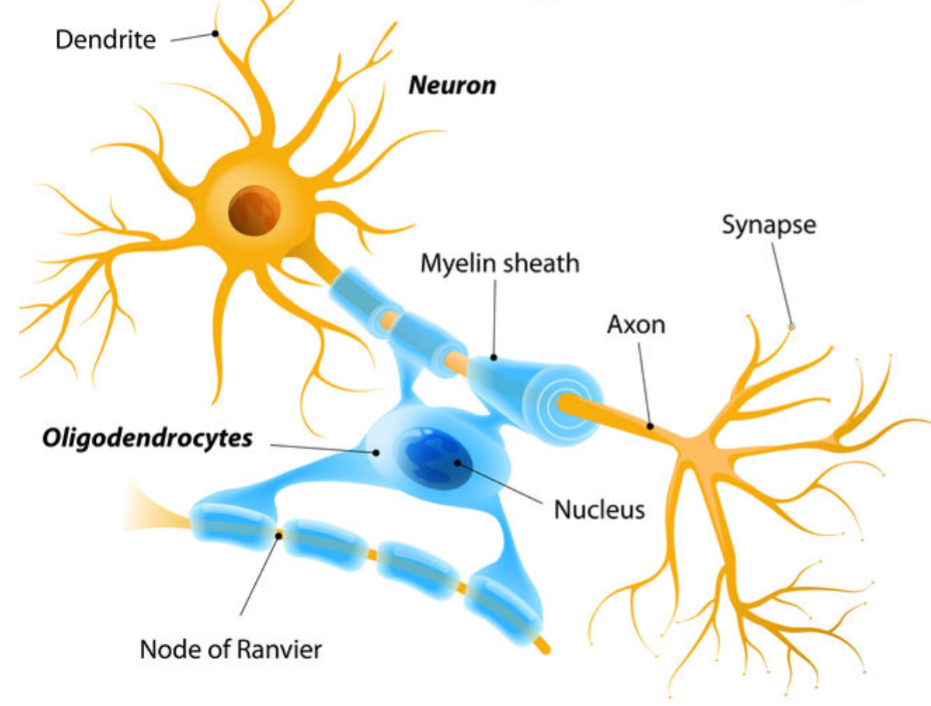
Neurolemmocytes
-glial cells
-Schwann cells
-form myelin sheath of PNS
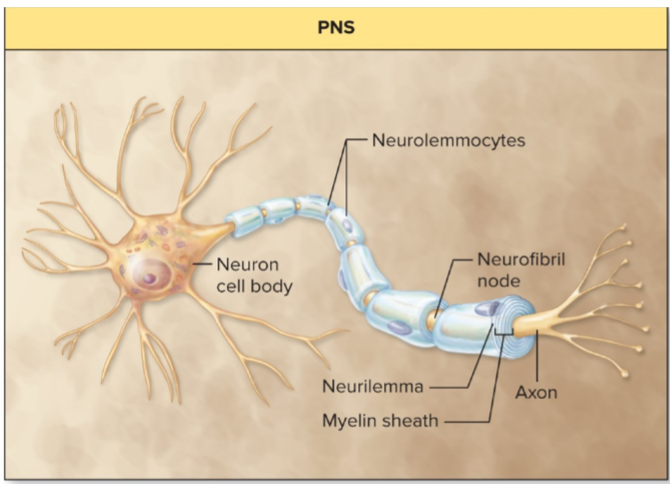
synaptic plasticity / plasticity
neuron signal pathway can be strengthened or weakened over time depending on how much we use it → how learning happens
post synaptic facilitation/inhibition vs
presynaptic facilitation/inhibition
post = EPSP/IPSP thru synapse
→it is axosomic = axon to soma of next cell, 2 cell action
pre = axoaxonal - axon release directly onto axon, 3 cell action
postsynaptic facilitation/inhibition image
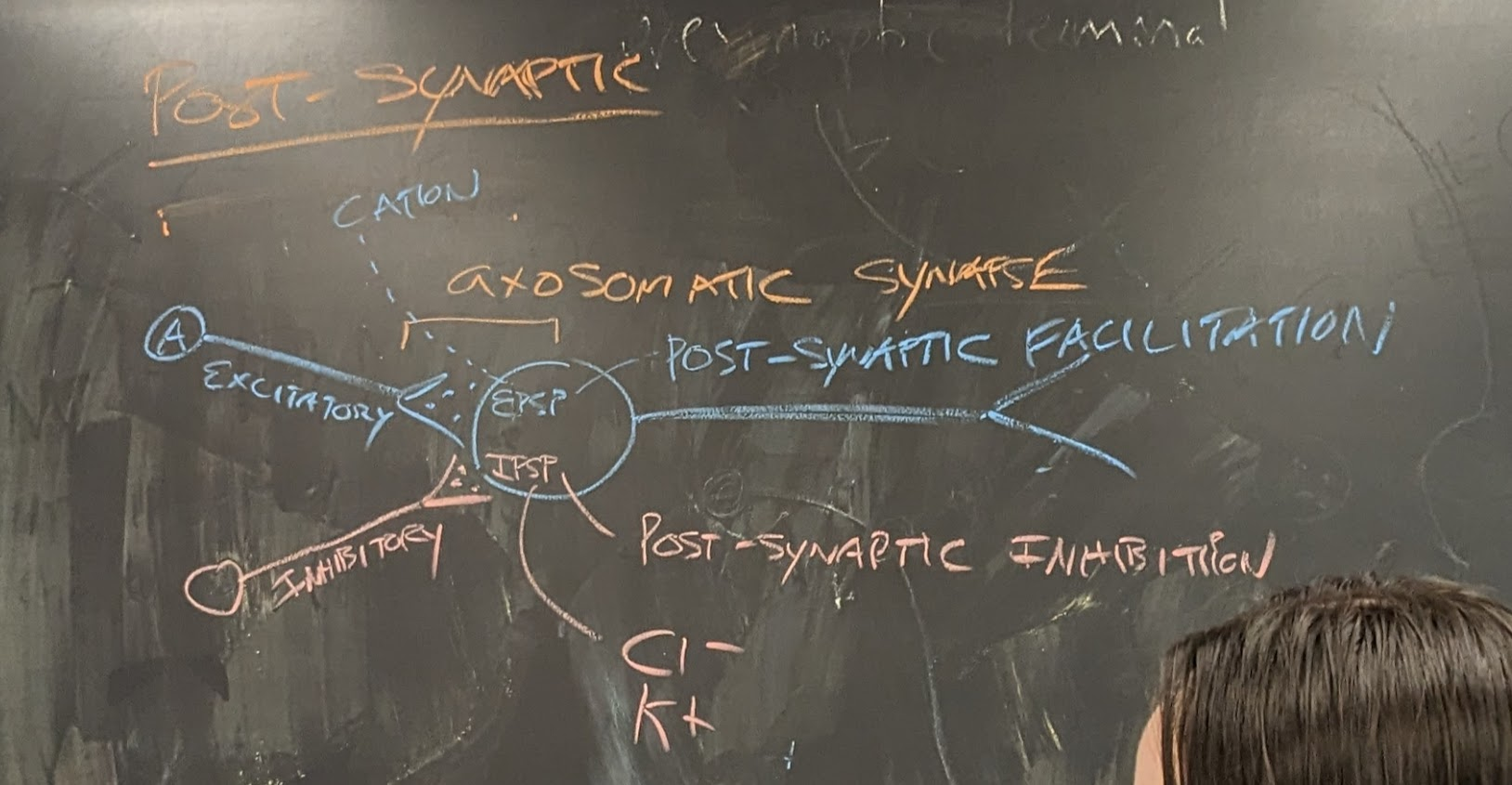
how does presynaptic inhibition work?
cell B release NT → opens chem gated Cl- channel on Cell A
Cell A gets more negative → prevent Ca VGC opening → no new NT release onto cell C
result = AP is not transferred
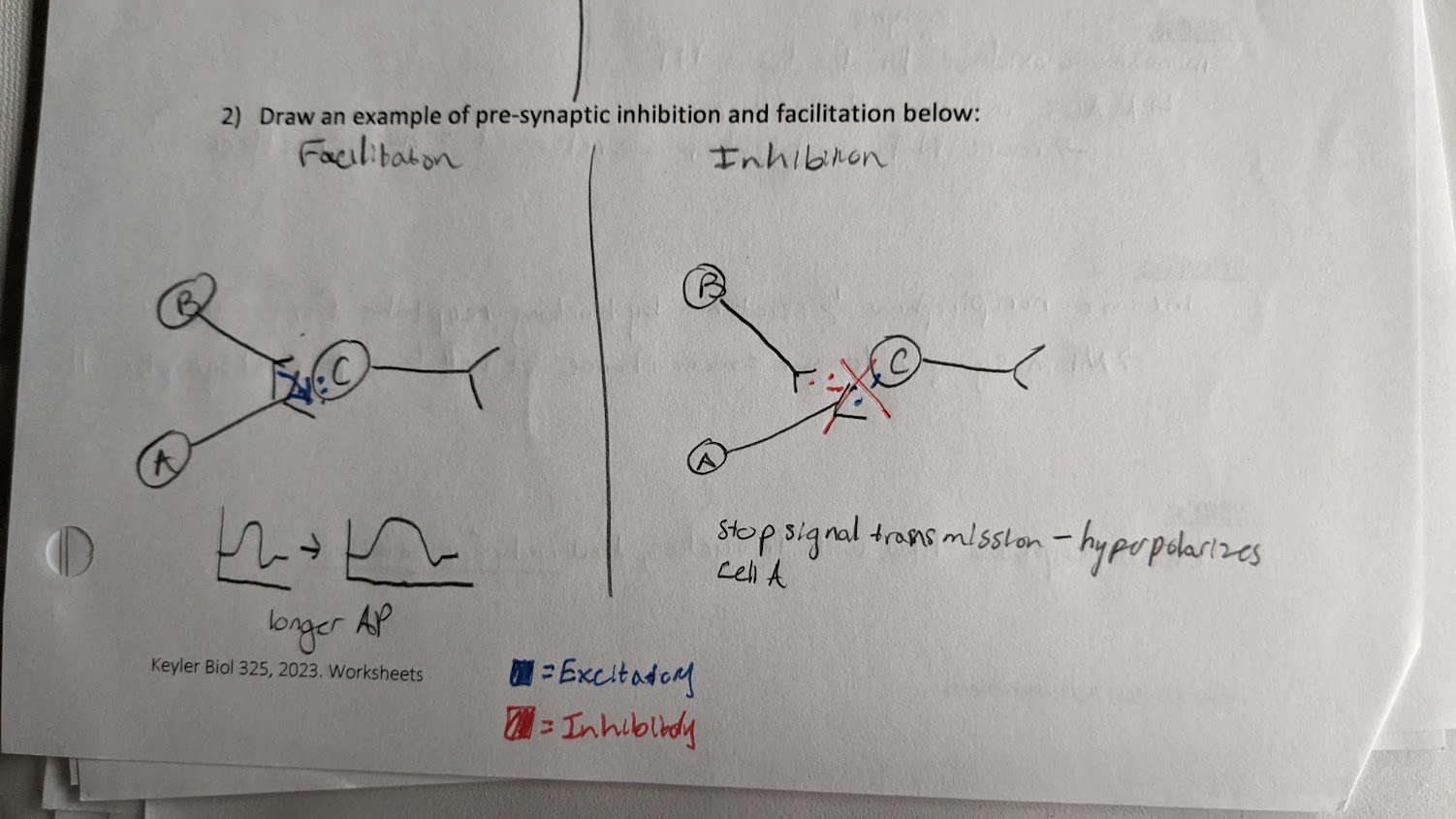
NT chemical structure category
1) Acetylcholine (ACH)
-needed for skeletal muscle contraction
-different structure than amino acid based categories
NT chemical structure category
2) biogenic amines
-modified Amino acid
-decarboxylase takes carboxyl off an AA
-includes catecholamine and indolamine
catecholamines
-subclass of biogenic amine
-has single ring catechol + R group
epinephrine
norepinephrine
dopamine
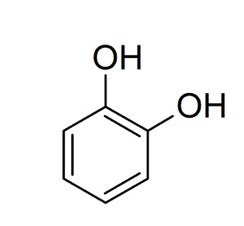
indolamines
-subclass of biogenic amine
-has double ring indole + R group
histamine
serotonin
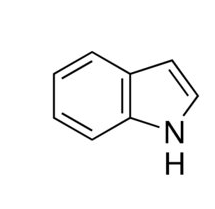
NT chemical structure category
3) Amino acids
-unchanged form of AA acting as a NT
GABA - EPSP
glutamate - IPSP
glycine - IPSP
NT chemical structure category
4) neuropeptides
-long chains of AAs
endorphins
NT chemical structure image/graph
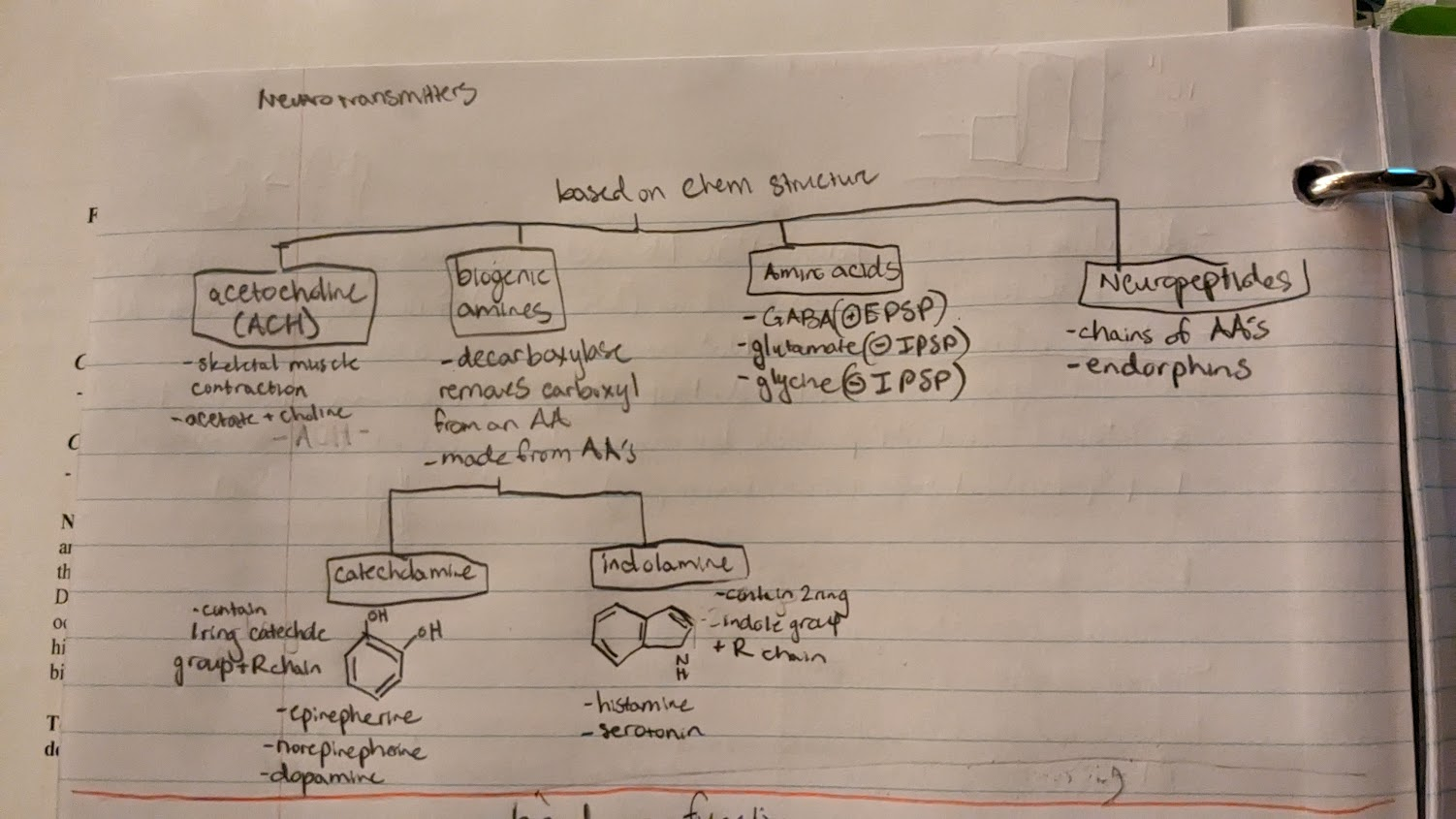
NT function category
effects
divided into excitatory (EPSP) or inhibitory (IPSP)
NT function category
actions - Ionotropic
-NT directly opens ion channels by binding to receptor
-immediate postsynaptic effect
NT function category
actions - Metabotropic
-NT indirectly causes response by binding to GPCR
-slower, but more diverse effects
NT function image/graph
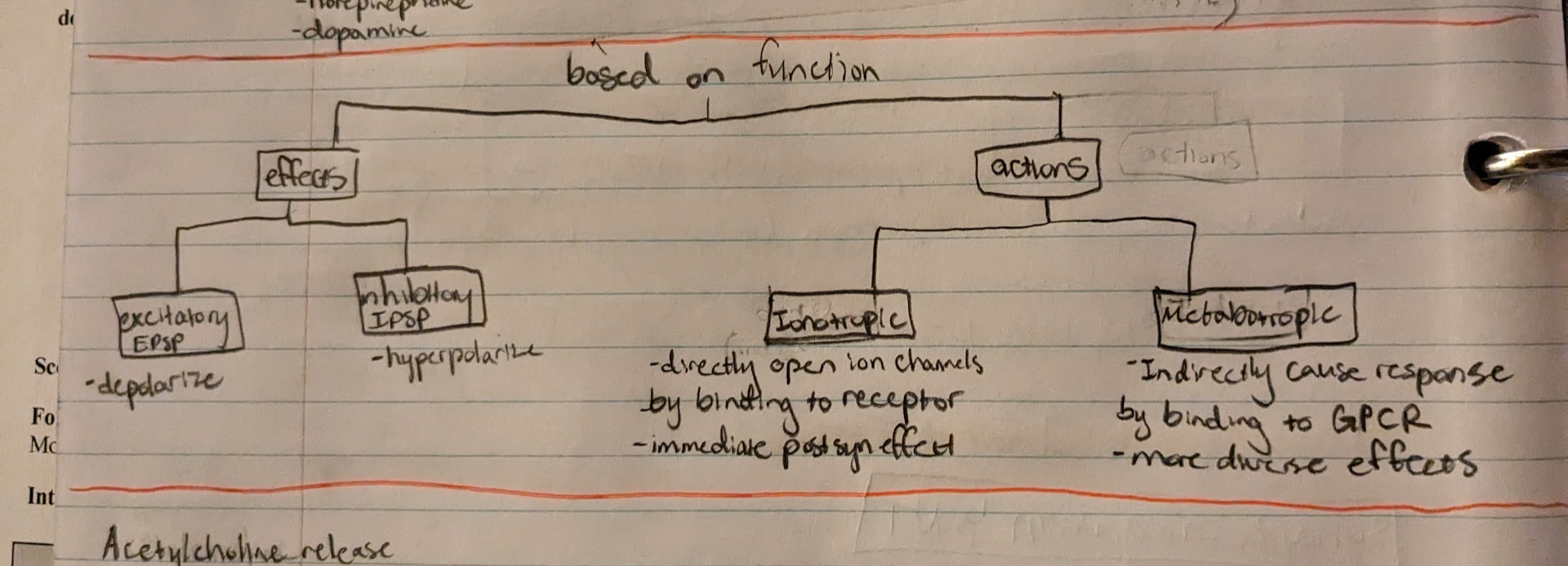
Acetylcholine synthesis
A) synthesis = acetate + choline, then gets stored in vesicles. released when AP signal
-more signal → more ACH release
Acetylcholine removal
B) removal from cleft = acetylcholinesterase breaks ACH into acetate and choline. binds to muscarinic receptors
-type of muscarinic determines if it’s EPSP or IPSP
how do MAOI’s work?
“monoamine oxidase inhibitors”
monoamine oxidase = enzyme that breaks down NT
→ MAOI inhibits this enzyme so NT doesn’t get broken down
→ more NT available = more released = more binding to post-synaptic cell
How do tricyclics and SSRI’s work?
both block reuptake so NT stays in synapse longer = greater chance NT will bind to post-synaptic cell
→ tricyclics = serotonin & norepinephrine
→ SSRIs = serotonin ONLY